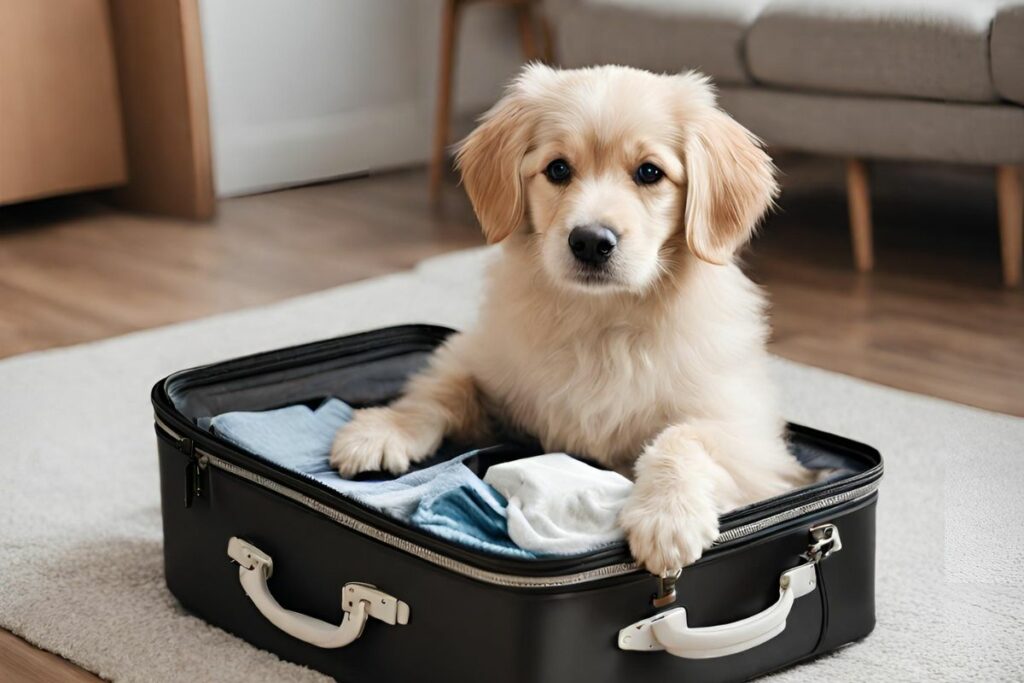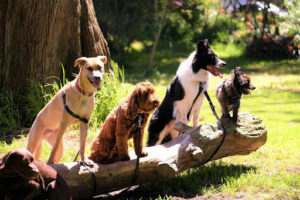Leaving your furry friend behind when you need to travel is never easy. However, the reality of life’s demands means that at some point, you might need to consider boarding your dog. With adequate preparation, the experience doesn’t have to be traumatic for either of you. In this in-depth guide, we’re going to cover everything you need to know about preparing your dog for a stress-free stay at a boarding facility.
1. Research and Choose the Right Boarding Facility
a. Credentials and Reviews
The first step in preparing your dog for boarding is to find the right facility. Look for places that have been accredited by reputable pet care organizations and have good online reviews. You should also seek recommendations from friends and family who have boarded their pets before.
b. Services Offered
Not all boarding facilities are the same. While some offer bare-bones services like feeding and bathroom breaks, others provide a range of extras like playtime, grooming, and even training sessions. Find a facility that aligns with your dog’s needs while preparing your dog for boarding.
c. Snouters Guarantee
Opt for services that offer additional safety measures like the Snouters Guarantee, which covers veterinary charges in the case of emergencies. This added layer of protection can give you significant peace of mind.
Also read: Dog Boarding Services in Bangalore: A Guide to Finding the Perfect Stay for Your Furry Friend
2. Pre-Boarding Vet Checkup
a. Basic Health Check
Before boarding, it’s crucial to ensure that your dog is in good health. Schedule a vet appointment to ensure that all vaccinations are up to date and that your dog is free from parasites like ticks and fleas.
b. Discuss Special Needs
If your dog has any medical conditions or special dietary requirements, make sure to discuss this with your vet. You’ll also need to communicate this information to the boarding facility when you’re preparing your dog for boarding to ensure they can cater to your dog’s needs.
3. Socialization and Preliminary Visits
Socializing your dog and making preliminary visits to the boarding facility are like the dress rehearsals before a big performance. They set the stage for how well your dog will adjust to their new temporary home. Below are some of the social components you should focus on while preparing your dog for boarding:
a. Socialization
If your dog isn’t used to being around other dogs or people, the boarding experience can be stressful. Gradually expose your dog to social situations to prepare them for the interaction they’ll have at the facility.
b. Preliminary Visits
Once you’ve selected a facility, take your dog for a few short visits. Let them explore the environment and interact with the staff. This will help them become familiar with the place while you’re preparing your dog for boarding, making the actual boarding less stressful.
4. Packing the Essentials
When it comes to packing for your dog’s boarding stay, think of it as packing for a child’s sleepover. You’ll want to include all the essentials to ensure their comfort and well-being when you’re preparing your dog for boarding. Here are some things to consider while preparing your dog for boarding:
a. Food and Treats
Stick to Routine
Consistency is key when it comes to your dog’s diet. A sudden change in food can result in an upset stomach, which could add unnecessary stress to the boarding experience. Make sure to pack enough of your dog’s regular food to last the entire stay when you’re preparing your dog for boarding. Pre-measure meals and place them in individual zip-lock bags, labeling each one with your dog’s name and mealtime.
Special Dietary Needs
If your dog has special dietary needs or restrictions, make a list or a chart explaining them while preparing your dog for boarding. This ensures that the boarding staff knows exactly what to do. Don’t forget to include any required supplements or medications.
Comforting Treats
Include a bag of your dog’s favorite treats while preparing your dog for boarding. These can serve as a comforting reminder of home and can also be used by the boarding staff as positive reinforcement during your dog’s stay.
b. Comfort Items
Favorite Toys
Just like children, dogs have their favorite toys that make them feel secure and happy. Include one or two of these in your packing. Toys also provide a source of entertainment and mental stimulation for your dog, making their stay more enjoyable.
Blanket or Bedding
A familiar blanket or bedding can make all the difference when your dog is sleeping in a new environment. The scent of home on these items can provide comfort and reduce anxiety. If your dog has a specific bed they’re attached to, consider bringing that along if the boarding facility allows it.
Personal Items
Some dog parents like to leave a piece of their own clothing, like a worn t-shirt, to comfort their dog. The familiar scent can help your dog feel closer to you, even when you’re miles away.
c. Identification and Documentation
ID Tags and Microchip Info
Ensure your dog’s ID tags are up-to-date and securely attached to their collar while preparing your dog for boarding. Also, if your pet is microchipped, double-check that the contact information is current. Provide the boarding facility with all this information, just in case.
Important Papers
Bring along a copy of your dog’s vaccination records, any relevant medical history, and emergency contact numbers. Place these in a sealed envelope and mark it clearly with your dog’s name and your contact information.
d. Miscellaneous Items
Grooming Supplies
If your dog requires regular grooming, pack the essential grooming supplies like brushes, combs, and any special shampoos or conditioners your dog uses while preparing your dog for boarding. This ensures continuity in care, even when you’re not the one doing the grooming.
Leash and Harness
Your dog’s regular leash and harness are additional must-haves. These are items your dog is used to, and they will help make walks and exercise sessions at the boarding facility feel more like the ones at home.
By packing all these essentials, you’ll ensure that your dog not only has a safe stay but also a comfortable and stress-free experience at the boarding facility. It might seem like a lot to remember while preparing your dog for boarding, but taking the time to pack thoughtfully can make a world of difference to your dog’s well-being while you’re away.
5. Mental and Physical Preparation
a. Exercise
Before taking your dog to the boarding facility, make sure they get plenty of exercises. A tired dog is a less anxious dog. Consider a long walk or an extended play session in the park.
b. Training Commands
In the weeks leading up to boarding, spend some extra time reinforcing basic commands like sit, stay, and come. This can help improve your dog’s behavior during their stay.
c. The Day Before
On the day before boarding, make sure your dog has ample opportunity to expend their energy. Consider a longer than usual play session or a hike in the park. The aim is to make them as tired as possible so that they’re more relaxed when it’s time for boarding.
By dedicating time to both mental and physical preparation, you can greatly reduce the stress associated with boarding for both you and your dog. These steps may require a little extra effort and planning, but the end result—a happy, well-adjusted dog during their boarding stay—is well worth it.
6. The Day of the Boarding: A Detailed Guide
a. Morning Routine: A Normal Start to an Exceptional Day
Stick to the Routine
Your dog has probably picked up on the fact that something out of the ordinary is happening. Even so, try to stick to your regular morning routine as much as possible. Feed them at the usual time, go for your morning walk, and keep your demeanor calm and relaxed.
Limited Food Intake
While it’s essential to maintain the routine, you may want to limit the amount of food you give your dog. Overfeeding, especially if your dog is already anxious, can lead to an upset stomach. Provide enough to satisfy them but not too much that it causes discomfort.
b. Dress Rehearsal: Prepping for the Journey
Final Bag Check
Go through your packed items one last time to make sure you haven’t forgotten anything. This is also a good time to double-check that all ID tags are securely attached and that you’ve packed all essential documentation.
A Comforting Item
Before leaving, offer your dog a comfort item, such as a favorite toy or a piece of your clothing, to keep with them during the journey. This can provide an added sense of security and make the separation easier.
c. The Journey: Heading to the Facility
The Car Ride
Some dogs find car rides soothing, while others might be apprehensive. If your dog falls into the latter category, bring along some calming items like a familiar blanket or even a calming spray designed for dogs. Keep the car well-ventilated and drive smoothly to make the journey as comfortable as possible.
Arrival Time
Plan to arrive at the boarding facility at a time when it’s least busy. Early mornings or late afternoons during weekdays, or mid-mornings during weekends, are generally less hectic. A quieter environment can make the handover less stressful for your dog.
7. Keeping the Goodbyes Short
It’s important to understand that dogs are extremely intuitive when it comes to human emotions. A prolonged goodbye while preparing your dog for boarding can send them the signal that there is something to worry about, increasing their anxiety and stress. This heightened emotional state can make it difficult for your dog to adjust to the new environment.
a. Be Quick but Calm
When it’s time to say goodbye, it’s best to make it quick. Prolonged farewells can increase anxiety for both you and your dog. However, make sure you’re calm and composed, reassuring your dog that everything is okay.
b. Leave Instructions
This is your final chance to communicate any last-minute instructions to the staff. If there have been any recent changes in your dog’s behavior, health, or preferences, make sure to mention them now.
c. Final Affection
Before you leave, offer your dog some final pets or hugs and use a cheerful tone to say your goodbyes. Your positive energy can have a reassuring effect on your dog as they prepare to spend time away from you.
8. Monitoring and Communication: Stay in the Loop, Not in the Lurch
a. Pre-Arranged Check-Ins
The Importance of Setting Expectations
Before you even leave your dog at the facility, discuss and set the frequency and mode of updates with the staff. Are they going to send you daily text updates, or will it be a phone call every other day? Knowing what to expect will ease your mind.
Pros and Cons of Daily Updates
Daily updates can be reassuring, but they can also make some pet owners more anxious, especially if they overanalyze every detail. Weigh the pros and cons and choose what feels most comfortable for you.
b. Opt for Visual Updates: Photos and Videos
The Value of Seeing Your Pet
Sometimes, a picture is indeed worth a thousand words. Requesting periodic photos or even short videos can provide a more tangible sense of how your dog is doing. Seeing your dog playing or resting comfortably can greatly reduce your own stress levels.
How Often is Too Often?
While it’s comforting to see visual updates, try not to overwhelm the facility staff by asking for too many. Trust in their professionalism and focus on the quality, rather than the quantity, of updates.
Also read: 6 Simple Steps to Train Your Dog for a Good Time at a Pet Boarding-Emotionally and Physically
9. Pick-Up Day: The Joyful Reunion and Beyond
a. Timing Matters: When to Arrive
The Facility’s Schedule
Before picking up your dog, review the facility’s hours and pick-up policies. Make sure you arrive within the designated pick-up window to avoid any additional fees or inconveniences.
Your Dog’s Internal Clock
Dogs have an innate sense of time, and by arriving at a time when they’re normally active, you’ll reduce the potential for stress or confusion.
b. Initial Reunion: The First Moments
What to Expect
As you walk in, it’s natural to be thrilled at the prospect of the happy reunion. However, dogs can be overwhelmed easily. You might find that they act a little reserved or even hesitant at first.
How to React
Approach your dog calmly and allow them to come to you. Maintain a happy yet relaxed demeanor so that your dog understands that everything is back to normal.
c. Immediate After-Care: What to Look For
Physical Condition
Upon reunion, give your dog a quick but thorough once-over to check for any signs of stress, like weight loss, or physical issues like cuts or limping.
Collect Belongings and Medication
Don’t forget to collect all of your dog’s belongings. Make sure you also retrieve any leftover medication, and get an update on whether all doses were administered as planned.
d. Information Debrief: Discuss the Stay
Staff Feedback
Take a few minutes to talk to the staff about how your dog’s stay went. Ask how they ate, slept, and interacted with other animals. This information can be invaluable for future boarding or even for changes in routine or diet at home.
Your Feedback
Share your experience with the staff, particularly noting anything that made you especially comfortable or any areas where you think they could improve. Your insights are valuable for the facility’s continual improvement.
e. Heading Home: The Journey Back
Keep it Calm
The car ride home is not the time for a celebration party. Keep the atmosphere in the car subdued to let your dog acclimate to the change gradually.
Rest and Rehydrate
Once home, give your dog some fresh water and a quiet place to rest. While they might be excited and want to play, remember that the change in environment can be exhausting.
f. Re-acclimation: The Next Few Days
Monitor Behavior and Health
In the days following your return home, keep an eye out for any changes in your dog’s behavior or health. Any prolonged symptoms like lethargy, digestive issues, or mood changes should be discussed with your veterinarian.
Gradual Return to Routine
Don’t rush to get back into your rigorous exercise or play routine. Allow your dog a few days to ease back into their normal schedule.
Preparing your dog for a boarding experience involves careful planning, emotional intelligence, and a trust-based relationship with the boarding facility. From the initial socialization visits to the emotional goodbyes, each step is vital for ensuring your dog’s well-being and your own peace of mind. Effective communication during the stay can help you stay connected with your pet, and a thoughtfully planned pick-up day ensures a smooth transition back to home life.
In a nutshell, boarding your dog doesn’t have to be a stressful experience for either of you. With proper preparation and a focus on your dog’s emotional and physical needs, you can make their stay away from home as comfortable as possible. After all, a well-prepared dog is a happy dog, and a happy dog makes for a relieved and satisfied pet parent.
We hope this comprehensive guide has provided you with actionable steps and thoughtful insights to prepare for your dog’s boarding experience. Happy travels to you, and a joyful, safe stay for your four-legged family member!











